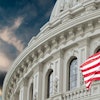Routine imaging to diagnose heart attacks generates incidental findings in more than half of patients -- prompting increased healthcare costs, according to a study published in the May issue of the Journal of Hospital Medicine.
Patients with chest pain are usually admitted to a hospital and undergo CT or other forms of imaging, wrote a team led by Dr. Venkat Gundareddy of Johns Hopkins Bayview Medical Center in Baltimore. But these imaging tests can lead to increased healthcare costs: For example, the group discovered that findings unrelated to chest pain kept patients in the hospital an average of 26% longer than people without them.
For the study, the researchers analyzed medical records from 376 patients admitted to Johns Hopkins Bayview Medical Center for chest pain over a two-year period. Of these patients, 197 had unexpected incidental findings. Fifty percent of these were deemed medically minor, 42% were moderate, and 7% were of major clinical significance, the team found (J Hosp Med, May 2017, Vol. 12:5, pp. 323-328).
Unexpected major clinical findings are often worked up during hospitalization, increasing the length of stay, adding to provider workload, and increasing expenses for testing, imaging, surveillance, consults, and labor, according to Gundareddy and colleagues. The additional time and costs are needed for some patients, but more research is needed to figure out the best setting for investigating these findings to reduce unnecessary costs.
"It's important for patients and providers to understand that as imaging gets more sensitive, it will pick up more things that are unrelated to the main problem for which imaging is done," Gundareddy said in a statement released by Johns Hopkins. "These findings might or might not be clinically significant, and although they may need attention, they don't necessarily need inpatient hospital attention."



















